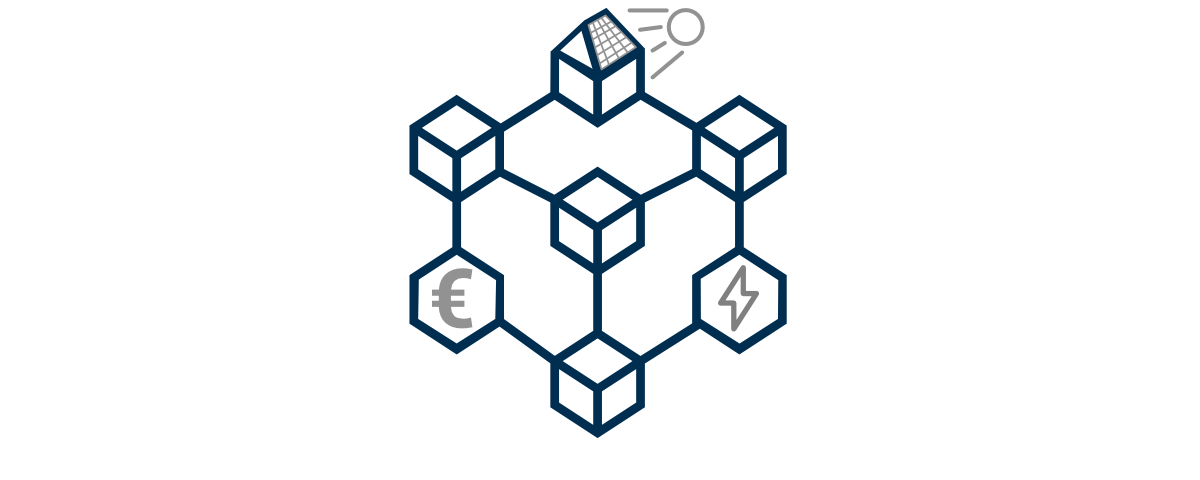
10.7. | Roundtable “Central Asia’s Readiness for Climate Change: Science and Policy”
10. July 2024Regional electricity trading on a digital marketplace – half-time practical test in the Euskirchen area

July 17, 2024 | Regional electricity trading on a digital marketplace – half-time practical test in the Euskirchen area
17 July 2024: As part of the BEST project, a consortium led by the Reiner Lemoine Institute (RLI) has been operating a digital electricity trading system in the Euskirchen region, the supply area of practice partner e-regio, since spring this year. Stakeholders such as companies, public institutions and private households are taking part in the practical test. Their electricity is traded on a digital marketplace on a trial basis. The use of open source software and technologies such as blockchain and trusted execution environments ensures transparency and security for market participants.
Whether photovoltaics on the production hall, municipal wind turbines or rooftop solar on your own home – electricity generation is becoming more decentralised as a result of the energy transition. If a particularly large amount of electricity is generated from renewable energies (RE) in a region, it can be offered cheaply on the regional electricity market and consumed exactly when it is generated. When used on a large scale, this can stabilise the energy system, reducing the need and costs for grid expansion and making the energy transition more cost-effective. Companies, public institutions and private households can benefit financially from the energy transition by automatically using the cheap green electricity from the region when it is generated.
Generating and consuming electricity regionally
‘We are investigating how a regional electricity market can serve the renewable energy system. Around one million kilowatt hours of renewable electricity are currently generated in the test area each year and could potentially be traded on our marketplace. In order to operate the market as optimally as possible and achieve the greatest possible benefit for end customers, we are testing the use of machine learning and demonstrating in the field test which tasks still need to be solved in the area of local electricity trading and digitalisation,’ says Friederike Reisch, head of the research project and deputy head of the unit Mobility with Renewable Energy research at RLI.
Digital marketplace for electricity
The electricity trading system works in two ways: Participants can form so-called communities (pools). Producers and consumers can then sell or buy electricity from each other directly and without intermediaries (peer to peer). For example a pool can consist of different locations of a company. Electricity that is not traded in this way can be offered on a marketplace. This works like the German electricity exchange: supply and demand are sorted and a standardised market price is formed every quarter of an hour. An energy service provider such as e-regio procures residual quantities of electricity that are not available regionally or sells surplus electricity that cannot be used regionally on the electricity exchange. This ensures security of supply at all times. e-regio Managing Director Stefan Dott on the practical test: ‘In the project, we are bringing electricity generation and consumption together in an intelligent way as a practical partner. And we are learning from this test how our customers can be even more actively involved in the energy transition in future.’
Software intelligently controls trading
Software developed as part of the project is responsible for forecasting electricity consumption and generation, controlling operations in line with individual specifications and creating and sending bids.
It uses algorithms, some of which are available as open source and can be viewed on the Github code hosting platform at the end of the project. The use of smart meter gateways is also being tested in the context of the project to ensure the secure transmission of billing-relevant data.
Adjusting grid fees for local electricity trading
The shift in electricity generation from large power plants to decentralised renewable energy systems is accompanied by a change in the use of the electricity grid. Electricity is usually transported from the transmission grid via several voltage levels to the consumption locations. Customers must bear the costs for all voltage levels. If electricity is generated and consumed locally, the lower voltage levels are increasingly utilised. The upstream grid is relieved. The market design developed in the BEST project takes into account not only the electricity supply but also the capacities of the electricity grid. Grid bottlenecks are thus reduced or avoided altogether with the help of monetary incentives.
‘Regional electricity markets become financially attractive if, among other things, grid fees can be reduced through regional and grid-friendly trading. This can help to avoid bottlenecks, serve as an additional incentive for the targeted construction of renewable energy plants and accelerate the energy transition. With the amendment to Section 14a EnWG, the Federal Network Agency (Bundesnetzagentur) has initiated important developments in the area of price incentives for grid-friendly behaviour. In the future, we will need even more dynamism and a cost distribution that is more in line with the principle of causation,’ says Reisch.
Consortium develops technical solution for local electricity market
Various players from the e-regio supply area in the district of Euskirchen are involved in the practical test, which will run until September 30th 2024. RLI is working on the BEST project together with experts from the Fraunhofer Institute for Open Communication Systems (FOKUS), the digital company OLI Systems, the fortiss research institute, Weserbergland University of Applied Sciences, the energy service provider e-regio and Energieforen Leipzig für Wissenstransfer in der Energiewirtschaft.
The project runs between January 2021 and September 2024 and is funded by the Federal Ministry for Economic Affairs and Climate Protection.
More information on the project can be found here.




